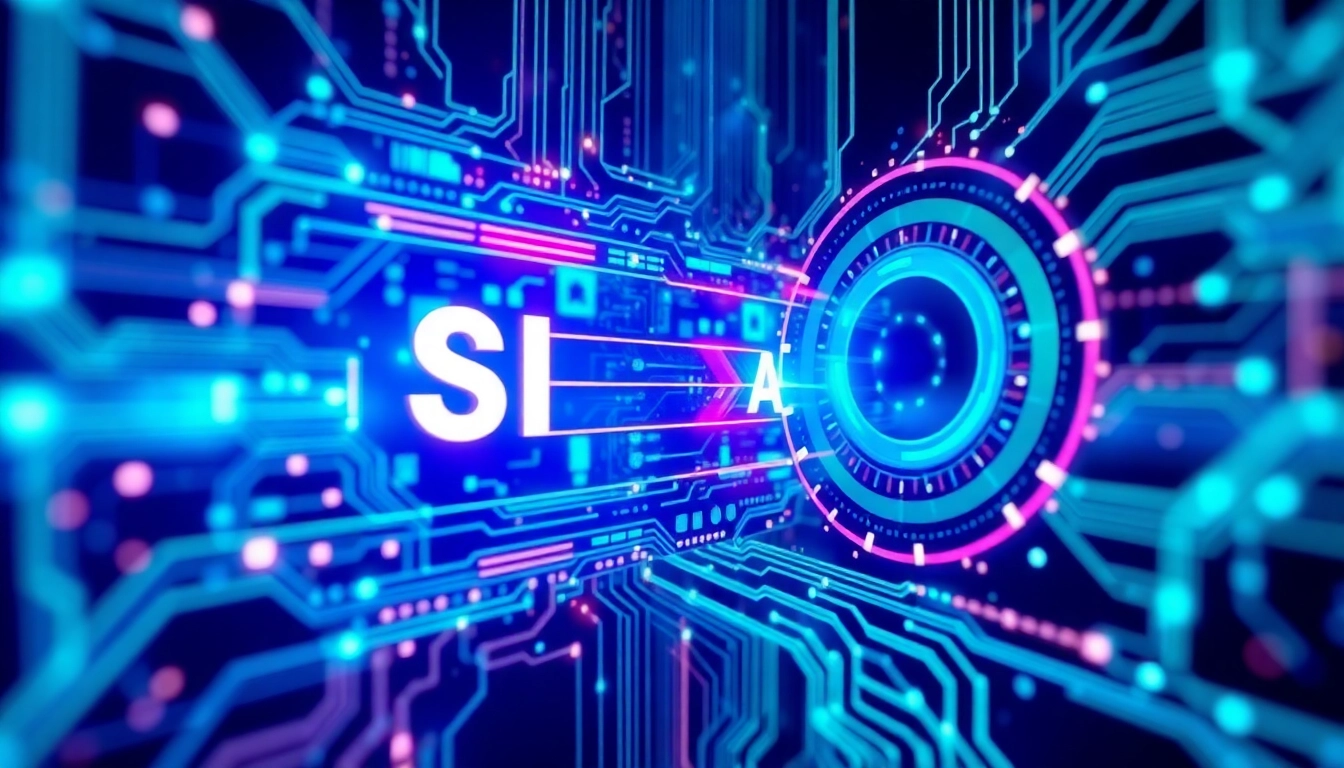Introduction to Agentic Human AI
In the rapidly evolving landscape of artificial intelligence, traditional definitions fail to capture the dynamic intersection of technology and human agency. One of the most significant developments in this field is Agentic Human AI, a term that encapsulates AI systems designed to operate autonomously while maintaining a crucial connection with human oversight. This article delves into the intricacies of Agentic Human AI, its evolution, core features, applications across various sectors, ethical implications, and steps for successful implementation.
Defining Agentic Human AI
Agentic Human AI can be defined as advanced AI systems capable of making autonomous decisions while understanding context and complex human goals. Unlike generative AI, which primarily focuses on producing outputs from prompts, Agentic AI emphasizes proactive decision-making and task execution. By leveraging vast datasets and learning from interactions, these systems gain the ability to analyze environments, predict outcomes, and adapt accordingly.
Evolution of AI Autonomy
The journey toward AI autonomy has traversed several phases, from rule-based systems in the early days of computing to the introduction of machine learning and deep learning approaches. The emergence of neural networks marked a turning point, enabling machines to learn from data rather than relying solely on pre-defined rules. As these technologies matured, the focus shifted toward creating autonomous agents capable of learning from experience and making independent decisions, leading to the formation of Agentic Human AI.
Importance of Human Collaboration
While the capabilities of Agentic Human AI are impressive, the importance of human collaboration cannot be overstated. Humans provide the nuanced understanding of context that machines often lack. Collaborating with AI allows professionals to enhance productivity and innovation while ensuring that ethical considerations and social implications remain at the forefront.
Core Features of Agentic Human AI
Autonomy and Decision-Making
One of the primary features of Agentic Human AI is its ability to function autonomously. These systems utilize algorithms that enable them to evaluate various options and select the course of action that best aligns with their programmed goals. This autonomy is complemented by a built-in decision-making framework that considers both immediate and long-term implications of their actions. Systems like IBM’s Watson exemplify how AI can autonomously analyze data and provide insights without constant human intervention.
Adaptability to Environments
Another critical attribute of Agentic Human AI is its adaptability. By employing machine learning strategies, these systems can adjust to changes in their environment and learn from new data. This adaptability is essential in sectors like healthcare, where patient data continually evolves, and in business, where market conditions shift rapidly. AI systems that can adapt will ultimately deliver more accurate and relevant decisions.
Contextual Understanding and Impact
Contextual understanding allows Agentic Human AI systems to interpret data meaningfully. This involves not only recognizing patterns but also understanding the significance of those patterns within a broader context. For instance, in natural language processing, agentic AI can comprehend nuances in human conversation, enabling it to provide responses that are not only accurate but also contextually appropriate. This enhances user experience and deepens the trust between humans and AI.
Applications of Agentic Human AI
Real-World Examples Across Industries
Agentic Human AI finds applications across various industries, exemplifying its versatility. In finance, for instance, AI systems play a pivotal role in risk assessment and fraud detection. By autonomously analyzing transactions, these systems flag unusual activities for further investigation. In manufacturing, AI optimizes supply chains by predicting demand and adjusting operations accordingly, leading to reduced waste and increased efficiency.
Use Cases in Business and Healthcare
In the business realm, companies leverage Agentic Human AI for marketing automation, customer relationship management, and sales forecasting. Through continuous learning, AI can adjust campaigns based on performance metrics, thereby increasing conversion rates. In healthcare, applications extend to diagnostic algorithms that analyze medical images or patient histories to provide recommendations, significantly improving patient outcomes.
Future Potential in Society
Looking ahead, the potential of Agentic Human AI to influence society is vast. As these systems become more integrated into everyday life, they will assist in city management, educational platforms, and even personal assistants. The potential to enhance human capabilities is enormous, provided that ethical considerations are addressed. Future developments might include more sophisticated collaboration frameworks, enabling humans and AI to work seamlessly together.
Challenges and Ethical Considerations
Data Access and Privacy Issues
As AI systems become increasingly autonomous, accessing the necessary data while ensuring user privacy presents a significant challenge. Many Agentic AI applications require vast amounts of data for training, which raises concerns regarding consent and data security. Striking the right balance between data requirements and ethical considerations will be essential in advancing Agentic Human AI while maintaining public trust.
Automation vs Job Displacement
The rise of automation through Agentic Human AI has elicited concerns over job displacement. As machines take over tasks traditionally performed by humans, the economic implications could be profound. However, rather than complete job loss, it is expected that the workforce will evolve. New job roles will emerge focusing on creativity, emotional intelligence, and higher-level decision-making that necessitate human intervention.
Maintaining Human Oversight
While autonomy is a defining feature of Agentic Human AI, maintaining human oversight is critical to ensure accountability and ethical compliance. Implementing robust governance frameworks that include human checkpoints can mitigate risks associated with errors or unintended consequences. By establishing roles for oversight, organizations can harness the benefits of Agentic AI while safeguarding against potential harms.
Implementing Agentic Human AI Solutions
Steps for Successful Integration
Integrating Agentic Human AI solutions into existing systems involves several steps:
- Assess Current Infrastructure: Understand existing processes and identify where AI can add value.
- Define Clear Objectives: Establish specific goals for AI deployment, including intended applications and performance metrics.
- Select Appropriate Technologies: Choose AI technologies that align with the organization’s needs.
- Pilot Testing: Implement pilot programs to evaluate performance before full deployment.
- Ongoing Evaluation and Adjustment: Regularly assess the system’s performance and make necessary adjustments based on feedback and results.
Performance Indicators and Metrics
To effectively measure the success of Agentic Human AI implementations, organizations should consider several performance indicators, such as:
- Accuracy: How well does the AI perform its designated tasks compared to expectations?
- Efficiency: Are processes optimized in terms of time and resource allocation following AI integration?
- User Satisfaction: Are users satisfied with the AI’s interactions and overall performance?
- Return on Investment (ROI): Does the implementation lead to cost savings or revenue generation that justifies the investment?
Conclusion and Future Outlook
Agentic Human AI represents a transformative shift in how we interact with technology, offering autonomy while requiring human collaboration to navigate complex human contexts. As organizations continue to explore its potential, the integration of AI solutions promises to enhance efficiency, innovation, and decision-making across sectors. However, careful consideration of ethical implications and effective governance will be paramount to achieving the full benefits of this cutting-edge technology.


